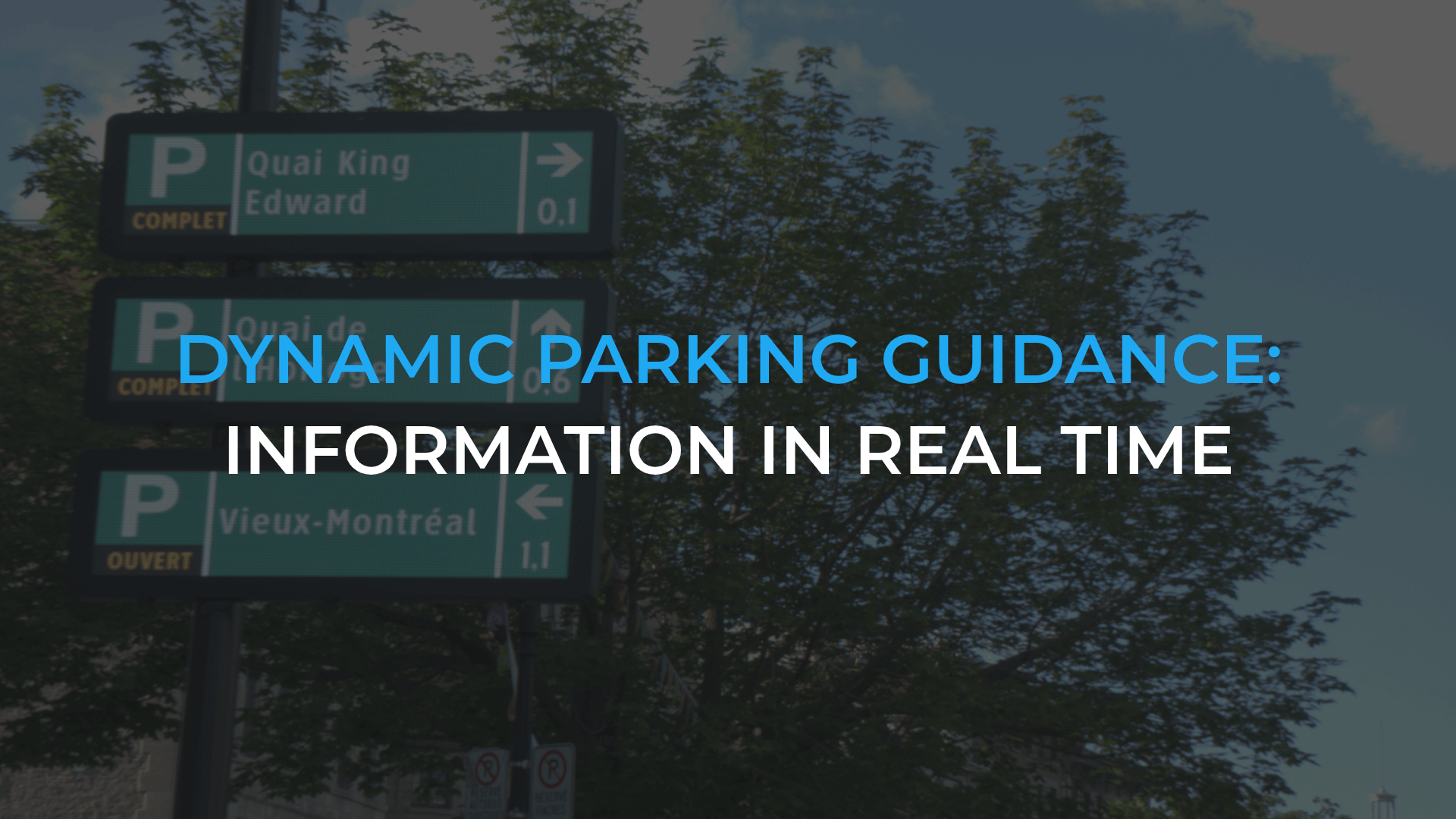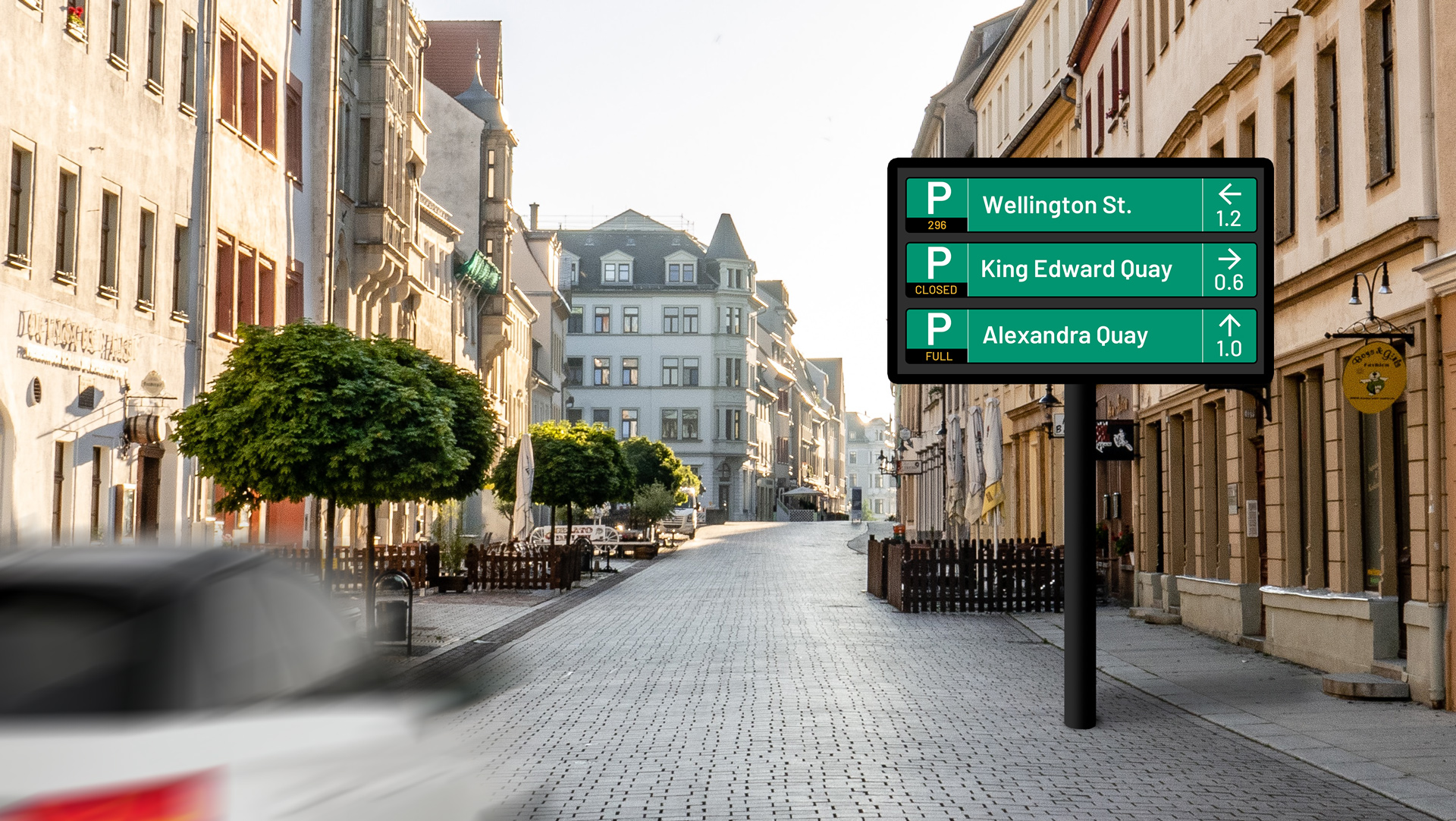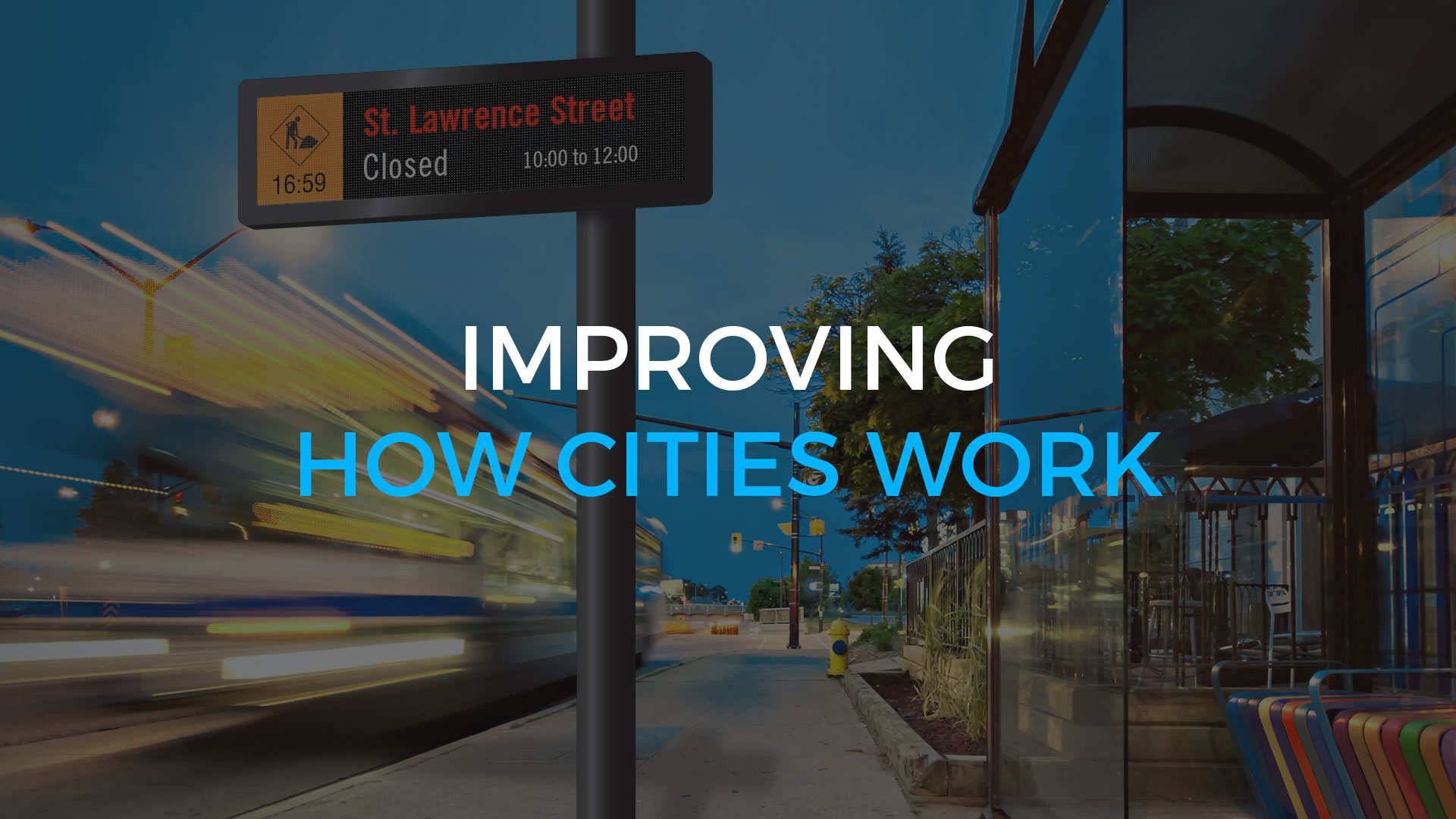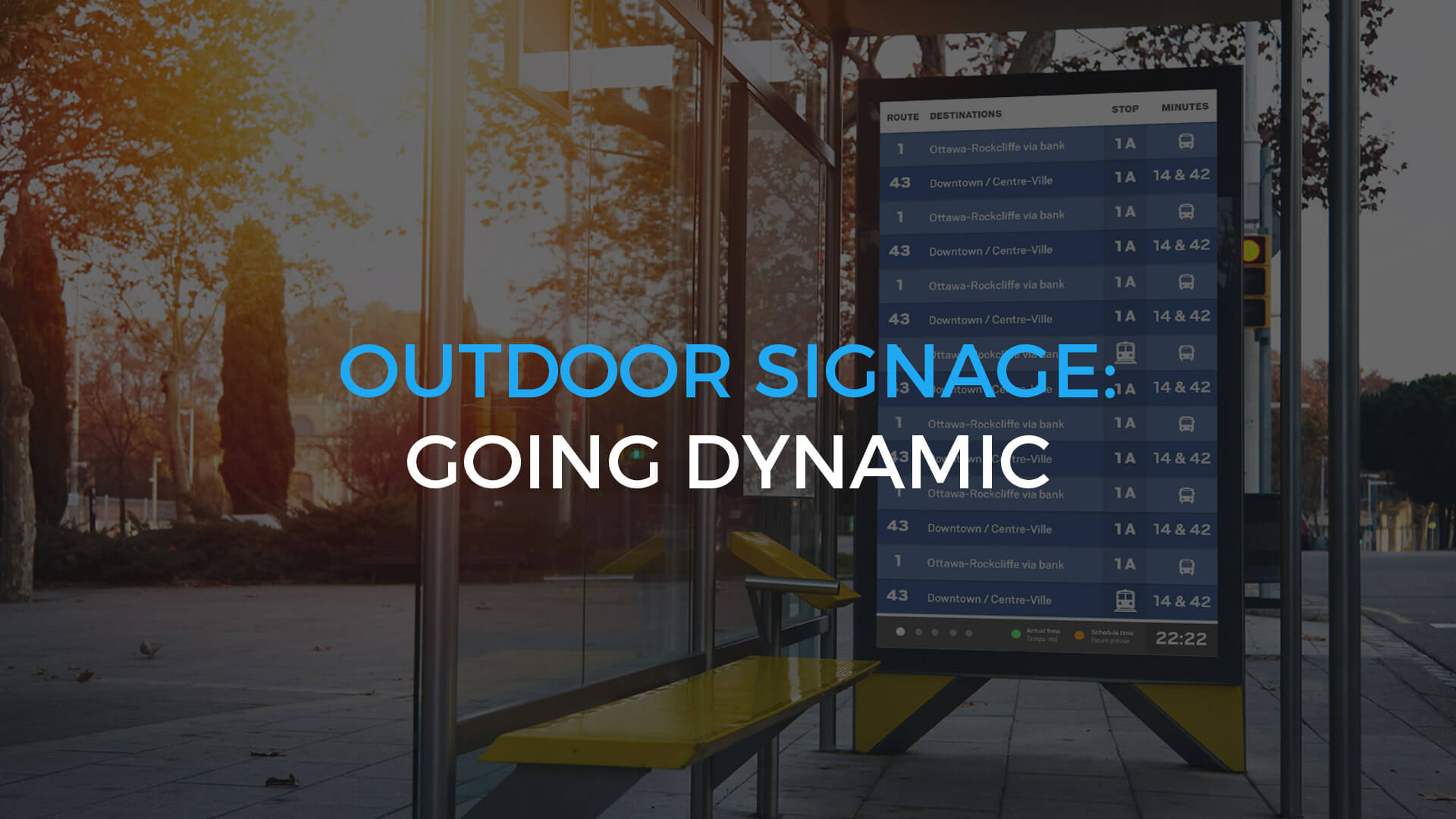Dynamic parking guidance: Information in real time
Dynamic parking guidance systems inform motorists about the number of available spaces in parking areas of their choice, either for street or off-street parking. Information is updated in real time and displayed on variable message signs in strategic places along high-traffic roads.
Displaying information about traffic congestion provides drivers with useful directions that help them reach their destination easily and avoid driving around in circles to find a parking space.
There are many advantages to dynamic parking guidance systems:
- Increase mobility and traffic flow in downtown areas
- Reduce carbon dioxide emissions and noise pollution levels
- Improve driving times
- Inform users about parking space availability
- Facilitate access to stores, businesses and restaurants
Innovation drives dynamic parking guidance
The evolution of LED and LCD display components used in digital signage helps cities communicate more information dynamically.
The quality of displays has vastly improved in the last few years, mainly because of the increased brightness of signs, the availability of display colors other than amber and a better resolution with a larger number of pixels. These improvements provide greater flexibility for managers of urban mobility networks and of communications.
The same goes for equipment used for parking access management: they are now connected (gates, cameras or sensors) and provide the exchange of information in real time on the status of parking availability. This information is then displayed on signs to inform motorists.
From dynamic parking guidance to citizen communication
These innovations help cities improve their return on investments in technologies made during the implementation of their digital signage network for dynamic parking guidance.
Cities now use their infrastructure as citizen digital communication tools through system interoperability and open data sharing with the different stakeholders in the smart city ecosystem.
Montreal city case study
Watch full video now
For example, not only can cities communicate information related to parking spaces, they also have the option to leverage multi-platform digital signage software solutions to provide information on road conditions to motorists by displaying messages such as:
- “Water accumulation”
- “Risk of freezing rain”
- “Snowy road”
Many different message types (e.g. event information) are also displayed. Since the beginning of the COVID-19 pandemic, numerous messages about public health directives have also been displayed, such as the one on this image published last week in the Journal de Montréal newspaper.

Credit: Agence QMI (Joël Lemay)
Which messages types would you ideally want to display in your city?






